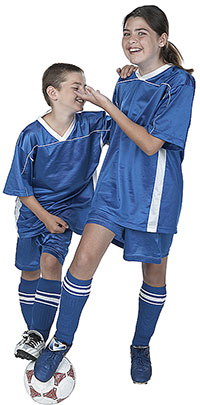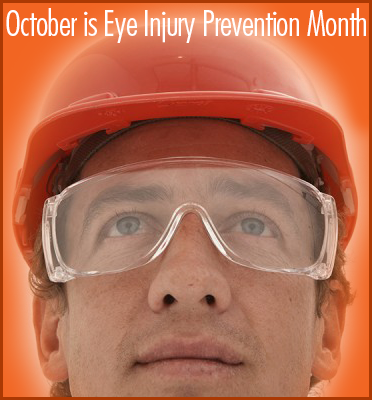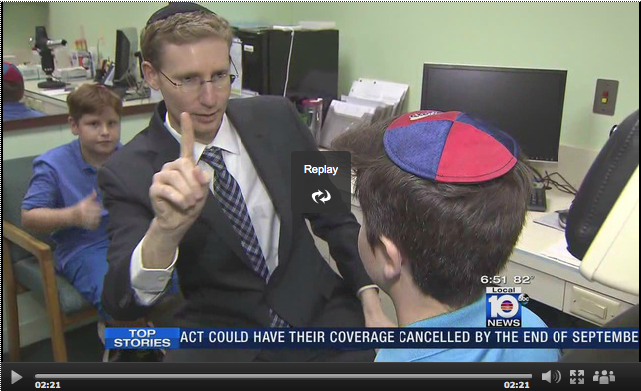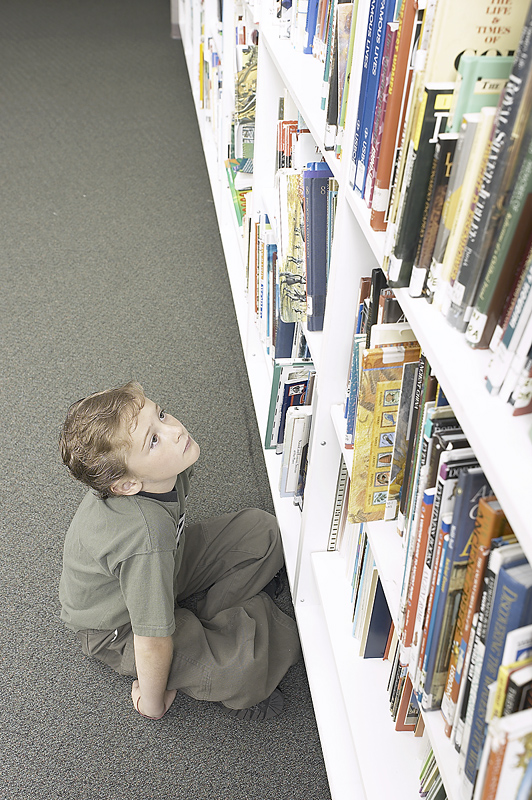Computer Eye Strain
Eye injuries come in all shapes, ways and forms, they occur when you lease expect it. Cleaning your home, playing catch with your children or even sitting at your work desk. Staring at a computer screen monitor for hours on end has become a norm in modern workdays, but inevitably, all that staring can put a real strain on your eyes.
Computer Eye Strain
Computer eye strain also known as, Computer Vision Syndrome (CVS), is not specifically one type of eye problem, but a whole range of eye strain and pain experienced by computer users. Working adults aren’t the only ones who are vulnerable to CVS (Computer Vision Syndrome). Kids who stare at portable gaming devices or use computers throughout the day at school and home also experience eye problems.
How Can Computer Screens Affect Vision?
Computer Vision Syndrome is similar to carpal tunnel syndrome and other stress-related injuries. It happens when the same motion is done over and over again and can worse the longer the activity is continued.
Working at a computer requires the eyes to stay in continuous focus and acquires a lot of effort from your eye muscles and is more strenuous than reading a book or looking at a piece of paper due to the elements of screen contrast, flicker and glare. Computers slow down the blinking rate, so eyes can dry out easily. Computer related eye injuries are more likely to occur if you already have an eye problem – such as nearsightedness or astigmatism.
What are the symptoms of Computer Vision Syndrome?
- Blurred vision
- Double vision
- Dry eyes
- Red eyes
- Headaches
- Neck and/or back pain
- Stinging and itchy sensation
- Temporary myopia (can’t see distant objects clearly right after computer use)
Tips on How to avoid Computer Vision Syndrome?
- Sit about 25 inches away from the computer screen and position your screen so your eyes gaze slightly downward.
- Follow the 20-20-20 rules! Every 20 minutes shift your eyes to look at an object at least 20 feet away for at least 20 seconds.
- Reduce glare from the screen by lighting the area properly.
- If your eyes start to feel dry, use artificial tears to keep them feeling fresh.
- Don’t forget to blink!
Children’s Eye Injuries
Children are prone to injuries, whether it’s a scraped knee or bruised elbow. Eye injuries, in particular, are extremely dangerous and very avoidable. When children participate in sports, recreation, crafts or home projects it is important for them to know eye safety practices and use the appropriate protective glasses. Here are some tips to keep your child away from eye-related injuries.
- Children should wear sport eye protectors, made with polycarbonated lens when playing.
- All chemicals and sprays should be kept out of reach of small children.
- Be a role model for your child and use approved eyewear during potentially dangerous yard work and household repairs and projects.
- Avoid projectile toys such as darts, bow and arrows and missile firing toys.
- Look for toys that are marked “ASTM”, which means the products meets the national safety standards set by the American Society for Testing and Materials.
- Do not allow your children near fireworks, especially bottle rockets. An adult should always handle fireworks.
- Make sure children are properly secured in baby carriers or safety seats while on the road. Children under the age of 12 should never ride in the passenger seat. Store all loose items, as any loose object can become a dangerous projectile in the case of a crash.
October is Eye Injury Prevention Month
Over 2 million people in the United States suffer from eye injuries, annually. Many of these injuries are caused during accidental occurrences, such as car accidents or falls, while others occur due to the negligence of not wearing proper protective eye wear.
As safe as we feel in the comfort of our own home, half of all eye-related injuries happen here. Ninety percent of these injuries could have been prevented or reduced simply by wearing protective eyewear. You can never be too safe when it comes to preserving the health of your eyes and preventing injuries from occurring.
Always take caution while partaking in household activities and chores.
- In the House – When using household chemicals and bleach always read instructions and labels carefully. Be careful while pouring or spraying, because if these chemicals get into your eye it can cause anything from minor irritation to a chemical burn. If this does happen, flush the eye by putting your head under warm running water and rinse the eye out for 15 minutes. Always use these products in a well-ventilated area.
- In the Garden – Wearing protective eyewear while operating a lawnmower, power trimmer or any other type of machinery will prevent objects like grass, rocks and stones from getting into your eye. Also be sure to warn bystanders when using these machines so they are aware of the dangers and take protective measures, as well.
- In the Workshop – Keep your eyes safe by wearing safety goggles while working to prevent flying fragments, fumes, dust particles, sparks and splashing chemicals from entering your eye.
Healthy Aging Eyes Month
September is Healthy Aging Eyes Month

As we grow older, our sight tends to weaken and we become more at risk for vision problems. Although, we can’t prevent our eyes from aging, we can slow down age-related damage. Follow these tips to ensure healthy eyes while aging:
- Get regular eye checkups- Starting at age forty, you should have obtained a baseline medical eye exam, even if you’re a healthy adult with no vision problems. By 65, eye exams should be scheduled every one to two years, or as recommended by your ophthalmologist.
- Stock up on your fruits and vegetables- Eat right to protect your sight! This means choosing a diet that is rich in fruits and vegetables, especially dark leafy greens. A sufficient intake of the antioxidants lutein and zeaxanthin can help lower the risk of age-related eye conditions. Lutein and zeaxanthin can also be found in fruits and vegetables with yellow-orange pigments, like carrots, squash and citrus fruits.
- Protect your eyes and wear some shades- Shield your eyes from the sun’s ultraviolet rays, which can damage your eyes just as much as they can damage your skin. Too much exposure to UV rays can cause cataracts, so grab a pair before you head out. Wearing a wide-brimmed hat while outdoors for a long period of time will also give you even more protection.
- Give your eyes a break- In order to prevent eyestrain, give your eyes a break from staring at your computer, television, phone, tablet and reading material. Look up or away for 10 seconds every 10 minutes will do the trick. Also, not getting enough sleep is another way to strain your eyes. Refresh your eyes and your entire body by getting some rest.
- Quit smoking- Smoking can promote many eye diseases, because it reduces the blood flow to the eyes and can also increase the amount of toxic substances your eyes absorb, like nicotine and tar. Being at risk for diabetic retinopathy or macular-degeneration, exposure to these types of toxin can elevate that risk even more. If you don’t smoke, stay away from those who do.
- Be aware of your risk factors- Knowing if you are at risk for any age-related eye diseases can do a great deal in preserving your eye sight. Genetic factors, lifestyle choices, diseases and certain exposures can place you in a higher risk category for certain diseases.
Back to School – Dr. David Rand, MD in the News!
Rand Eye Institute’s Dr. David Rand, MD in the News!
Back to School is just around the corner and final preparations under way, but have you scheduled your child’s eye exam?
Be sure to click on the link below to hear from WPLG-Local 10 Health Reporter, Kristi Krueger, the importance of Back to School eye exams.
http://www.local10.com/news/vision-tests-recommended-for-kids-heading-back-to-school/27452116
Parent’s Back to School Vision Checklist
These are formative years for your child, personally and physically. If you have noticed a change in your child’s behavior it may be due to a change in his or her vision. Below is a list of warning signs. If your child demonstrates any of these symptoms, it is advisable to consult your eye care professional.
What to Watch for:
- Child holds reading material too close to face.
- Child sits too close to TV.
- Complains that the writing on classroom blackboard is blurry or too small.
- Missing the ball very often in sports.
- Child complains of double vision.
- Child points to words while reading.
- Writing words or letters backwards could indicate a problem.
- Child complains of headaches.
- Child skips or misses words while reading.
- Child sees better out of one eye than the other.
- Child complains of pain in or around the eye.
Poor hand-to-eye coordination. - Photophobia (bright lights bother eyes).
Dizziness or nausea. - Poor concentration while reading.
- Abnormal head tilt while reading.
- Closes or covers one eye to read.
We’ve all heard this before, and guess what… these are recommended by your caring eye doctors.
Do
- Rest your eyes when they’re tired, especially when working at a computer.
- Wear protective goggles when using power or hand tools.
- Wear sunglasses when outdoors.
- Read in proper lighting.
- Wear your prescribed eyeglasses.
- Flush your eyes with water when dirt or dust gets in your eyes.
- Hold your book approximately sixteen inches away from your face when reading.
Don’t
- Don’t sit close to the TV. Maintain a distance of eight to ten feet.
- Don’t rub your eyes with dirty hands.
- Don’t point sharp objects at anybody’s eyes.
- Don’t look directly into the sun or bright lights.
- Don’t open your eyes under water unless you are wearing protective goggles.
Remember, your child may still have an eye problem even if he or she does not complain or has not shown any unusual signs.
Now is the time to schedule a Back to School Eye Exam.
Children’s Eye Health & Safety Month
Children’s Eye Health & Safety Month/Back to School Eye Health
It’s that time of year again to start packing the lunchboxes and waiting in car lines: BACK TO SCHOOL!
Preschooler. Between the ages of 3 and 3½, a child’s vision and eye alignment should be assessed by a pediatrician, family doctor, ophthalmologist, optometrist, orthoptist or person trained in vision assessment of preschool children.
School age. Upon entering school, or whenever a problem is suspected, children’s eyes should be screened for visual acuity and alignment by a pediatrician, family doctor, ophthalmologist, optometrist, orthoptist or person trained in vision assessment of school-aged children, such as a school nurse. Nearsightedness (myopia) is the most common refractive error in this age group and can be corrected with eyeglasses. If an alignment problem or other eye health issues is suspected, the child should have a comprehensive exam by an Eye M.D.
Celebrating our Seniors
The Rand Eye Institute continues the celebration of Senior Independence Month with the anecdotes of a member of the Rand Eye Institute’s Centennial Club. The video below provides some Personal Tips on living a prosperous and fulfilling life. Don’t let a number stop you from the lifestyle you want.
So True or So False?
 As a child, your mom most likely nagged you about straining your eyes. Myths about eyesight have been ongoing for centuries. But are these myths true, or are they really just myths? Let’s take a look!
As a child, your mom most likely nagged you about straining your eyes. Myths about eyesight have been ongoing for centuries. But are these myths true, or are they really just myths? Let’s take a look!
Looking at a computer screen for too long can damage your eyes. FALSE
Excessive computer use can cause eye fatigue or discomfort. The computer screens do not cause the discomfort, and the radiation levels are below levels that can cause damage to the eyes. It can cause eyestrain.
Eating carrots will improve your vision. TRUE
Carrots contain Vitamin A, which is essential for eyesight, but only a small amount is necessary.
Reading in the dark can damage your eyes. FALSE
It can only make the eyes tired.
Using improper glasses can damage your eyes. FALSE
Contacts or glasses are necessary to improve eyesight, but not using glasses or contacts will not further damage the eyes.
Swimming in a pool with your eyes open can damage your vision. FALSE
The chlorine from the water can cause irritation and burning of the eyes. It is not dangerous, but uncomfortable. Wearing goggles is the way to go.
Swimming in the ocean with your eyes open can damage the eye if contact is made with dangerous substances like man o’ war tentacles. FACT
Keeping Your Vision Safe During the 4th of July
As we all know fireworks are fun and exciting to watch, but did you know that fireworks injure over 9,000 people each year? Of the 9,000 plus people that are injured, 47% of those people are bystanders. The safest way to enjoy fireworks for this upcoming 4th of July is to remain at least 500 ft. away from where the fireworks are being lit. If you or someone else are setting off fireworks at home or in the street, you should follow these steps:
- Make sure the person lighting the fireworks has protective eyewear.
- Make sure they never try to relight a “dud” firework.
- Make sure only one firework is being lit a time, never attempt to light more than one.
- Never aim a firework at a person, pet, vehicle, house, or any structure or something flammable.
- Always keep a supply of water near by at all times as a safety precaution.
- When storing fireworks, keep them in a cool, dry and safe place, away from children and pets.
- Lastly, one should leave the area where the fireworks are being shot off from, unless it is a trained professional, in which case one should remain at least 500 ft. away.
In the event of a fireworks eye injury, one should: “Get medical attention right away”!
Here is the list of things to avoid:
- Do not rub your eyes
- Do not rinse your eyes
- Do not apply pressure
- Do not apply ointments Do not remove an object from your eye (if one gets stuck there)
- Lastly, do not take blood thinning pain drugs, such as aspirin or ibuprofen.
The fireworks that cause the most injuries are Firecrackers (1200 injuries), Sparklers (600 injuries), and Bottle Rockets (600 injuries). While fireworks are not banned in every state, in order to enjoy fireworks while staying safe this 4th of July, leave the lighting and setting up to the professionals.







